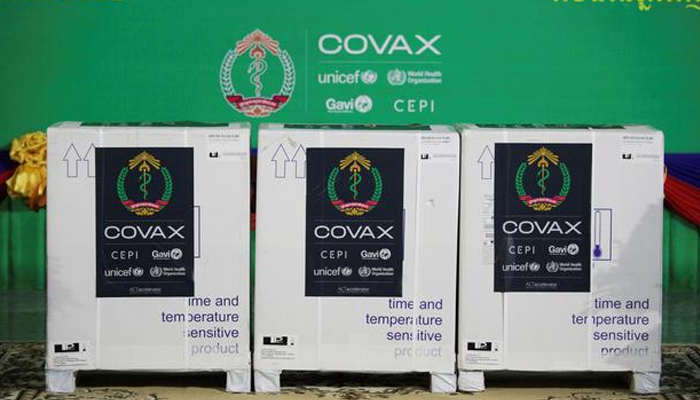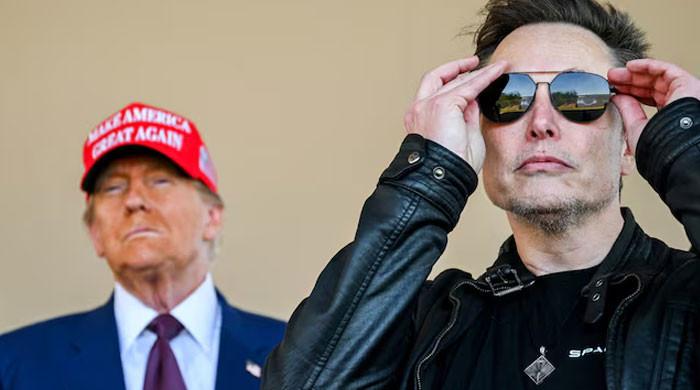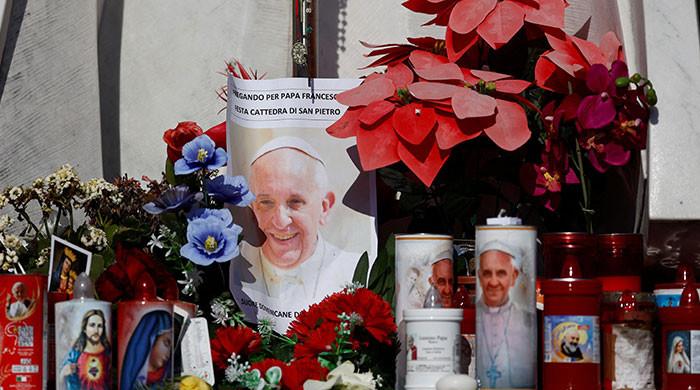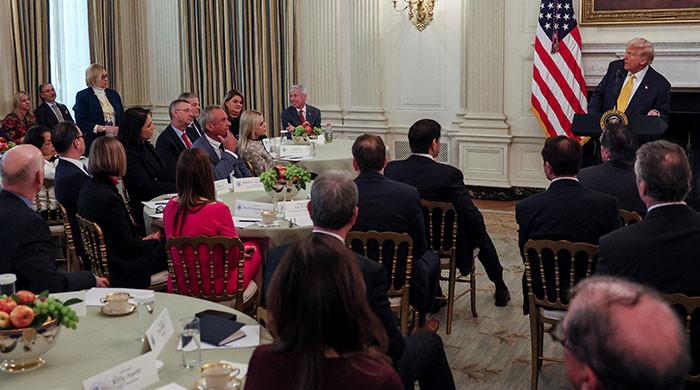Asian countries on look out for alternate coronavirus vaccines after India causes COVAX setback
India's export curb deepens the problems facing the COVAX scheme
March 30, 2021

- India's export curb deepens the problems facing the COVAX scheme.
- The shortage could leave poor countries further behind in inoculations.
- WHO says COVAX needed 10 million doses immediately as a stop-gap measure.
Following India's vaccine export restrictions, several Asian countries sought alternative sources for COVID-19 inoculations on Tuesday, after New Delhi's move left a World Health Organisation-backed global vaccine sharing programme short of supplies.
The export curb deepens the problems facing the COVAX scheme, relied on by 64 poorer countries, and adds to previous setbacks that include production glitches and a lack of funding contribution from wealthy nations.
The shortage could leave poor countries further behind in inoculations, increasing the vaccine inequity, complicating global efforts to tame the coronavirus including more infectious variants, and exposing fresh pleas for a global treaty on pandemics as rather hollow.
South Korea, Indonesia, the Philippines and Vietnam are among countries to be hit by shipment delays to vaccines they have been promised under the COVAX programme, which was created mainly to ensure supplies for poorer countries.
“Our planned increase in daily vaccinations will be affected,” Carlito Galvez, Philippines’ vaccination chief, told reporters.
India, the world’s biggest vaccine maker, put a temporary hold on exports of AstraZeneca’s vaccine being manufactured by the Serum Institute of India (SII), as officials focus on meeting rising domestic demand.
The Serum Insitute was due to deliver 90 million vaccine doses to COVAX over March and April and, while it was not immediately clear how many would be diverted for domestic use, programme facilitators warned that shipment delays were inevitable.
In Indonesia, health ministry official Siti Nadia Tarmizi told Reuters that 10.3 million doses from COVAX were likely delayed until May.
South Korea confirmed it would only receive 432,000 doses of the 690,000 it had been promised and delivery of those would be delayed until around the third week of April.
“There’s uncertainty over global vaccine supplies but we’re working on a plan to ensure no disruptions in the second quarter and making efforts to secure more vaccines,” said Kim Ki-nam, head of South Korea’s COVID-19 vaccination task force team.
Philippines President Rodrigo Duterte loosened government restrictions on private sector imports of vaccines, pleading with companies to obtain supplies no matter the cost, as his country battles a resurgence of the pandemic.
In Vietnam, officials have similarly asked the private sector to step in after their COVAX supplies were slashed by 40% to 811,200 doses and shipments were pushed back by weeks.
India has not provided details on the length of its export curb but UNICEF, a distributing partner of COVAX, said at the weekend that deliveries are expected to resume by May.
WHO Director-General Tedros Adhanom Ghebreyesus said on Tuesday COVAX needed 10 million doses immediately as a stop-gap measure.
“We are already in discussion with some countries (to fill the gap) and there is some positive signal, we will keep you informed,” he said.
Data from UNICEF showed on Tuesday that India itself had received more than a third of the nearly 28 million doses of the AstraZeneca vaccines from COVAX so far, the most of any country. News that the largest allocation of the programme’s Indian-made vaccines had never actually left India could add to criticism of New Delhi and COVAX.
The Gavi alliance, which co-leads COVAX with the WHO, said India had been given a big allocation early, in part because it approved the vaccine for emergency use before the WHO did.
Africa is overwhelmingly dependent on COVAX and nearly all the 89 million shots the continent was due to receive through the initiative by end of this quarter were AstraZeneca from India. A Reuters tally of deliveries found that just 15 million have been delivered so far.
About 63% of people who have received at least one dose of a coronavirus vaccine are from high-income countries, according to a Reuters tally. More than 45% of Britons have received one dose, but only 0.4% of South Africans.
China and Russia
China and Russia are primed to step into the breach.
“We have good diplomatic relations with China and Russia and we are asking if we can have access to their vaccines in April,” the Philippines’ Galvez said.
Both the Philippines and Indonesia are currently relying heavily on vaccines from China’s Sinovac Biotech to run their inoculation drives. The Philippines and Vietnam have both approved Russia’s Sputnik V vaccine, along with more than 50 other countries, mainly developing nations. The Philippines expects to receive its first batch of Sputnik V in April.
Chinese vaccine maker Sinopharm, meanwhile, plans to produce its COVID-19 vaccine at a new plant in the United Arab Emirates.
The spate of export curbs is also being felt by wealthier countries reliant on foreign manufacturing, including Japan, where the national vaccine rollout has been slow due to the limited number of Pfizer vaccines shipped from Europe.
“Some people are using vaccines for diplomacy, some people are trying to prioritise. Some people are buying like three to five times as many vaccines compared to their population. That’s unnecessary,” Japan’s vaccine minister, Taro Kono, told Reuters on Monday in an interview.
“We really need to have the global leaders sit down and think this is a global issue, not the domestic issue, and try to solve this together.”











